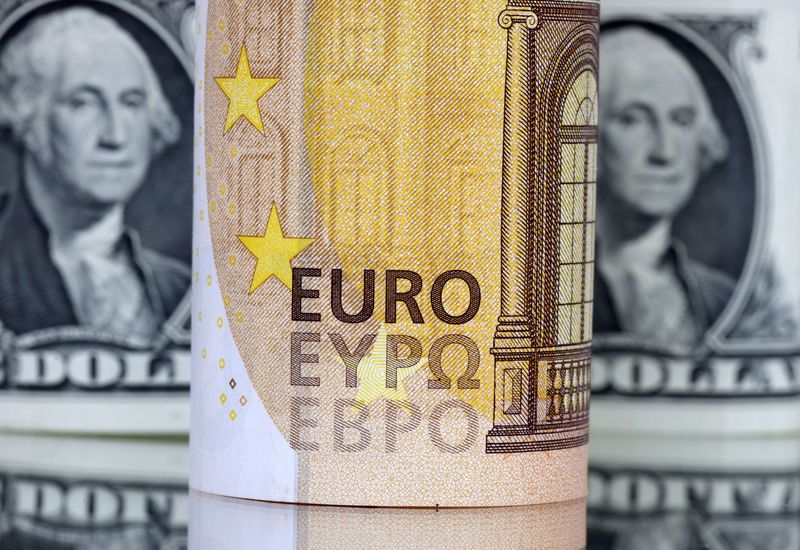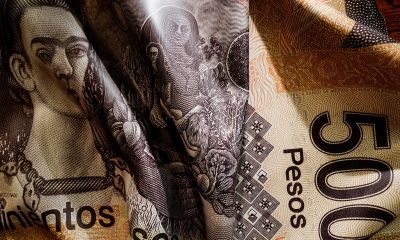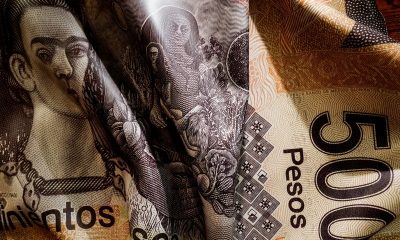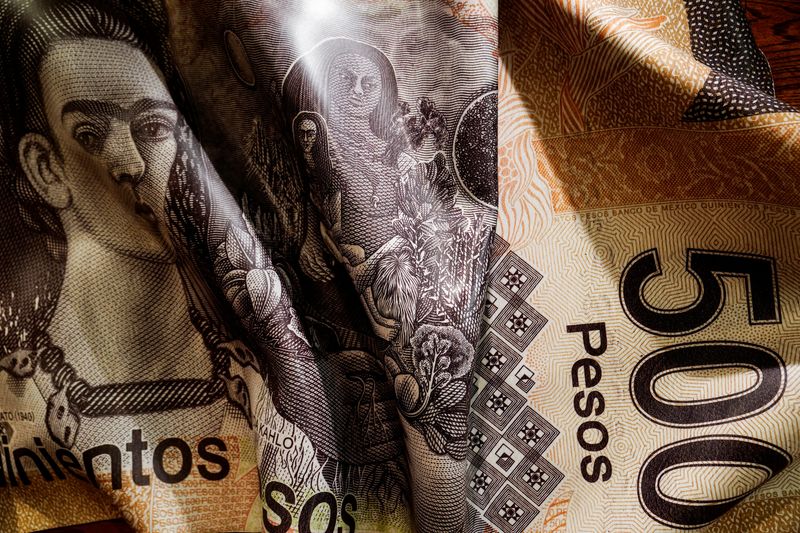Forex
U.S. dollar gains as risk sentiment sours, Treasury yields rise


© Reuters. FILE PHOTO: U.S. Dollar and Euro banknotes are seen in this illustration taken July 17, 2022. REUTERS/Dado Ruvic/Illustration/File Photo
2/2
By Saqib Iqbal Ahmed
NEW YORK (Reuters) -The U.S. dollar edged higher against a basket of currencies on Wednesday, as investors’ appetite for riskier currencies faded following lacklustre corporate results that raised worries over the economic outlook, and as Treasury yields rose.
Risk sentiment took a hit as tech giant Alphabet (NASDAQ:) slumped after its cloud division missed revenue estimates, while other mega-cap stocks also edged lower, pressured by rising U.S. Treasury yields.
The , which measures its strength against a basket of six rivals, was 0.2% higher at 106.46, having touched its highest level for nearly a week at 106.52.
“I think it is mainly a risk backdrop story,” said Shaun Osborne, chief foreign exchange strategist at Scotiabank in Toronto. “Weak risk appetite seems to be driving broad USD gains.
Benchmark inched higher, resuming a move toward a 16-year peak of 5.0% briefly breached on Monday. The 10-year yield was last at 4.9165%.
Global financial markets have been gripped by a surge in U.S. bond yields, which helped drive the dollar index to its highest in almost a year earlier this month.
Analysts, however, see limited room for yields and the dollar to extend gains.
“My inclination is to look at these gains as an opportunity to fade some of the dollar strength against certain currencies,” Scotiabank’s Osborne said.
Elsewhere, the Australian dollar jumped on Wednesday after a surprisingly high reading for inflation stoked speculation about a further hike in interest rates and slugged bond futures. But it erased all those gains to trade down 0.52% on the day. [AUD/]
“The interesting thing about Australia is that a lot of other central banks are in a very similar position. They have paused, the market’s hoping that will be it, but everyone is on tenterhooks hoping that inflation will remain well behaved, and in the case of Australia it has not,” said Jane Foley, head of FX strategy at Rabobank.
The Canadian dollar weakened against its U.S. counterpart after the Bank of Canada held its key overnight rate at 5.0%, as expected, and forecast weak growth while leaving the door open to more rate hikes to tame inflation that could stay above target for another two years.
The U.S. dollar was last up 0.44% against the Canadian currency.
The dollar also kept the yen pinned near the closely watched 150 threshold, with the Japanese currency last at 149.93 per dollar, with traders alert for any signs of intervention by Japanese authorities.
Pressure is mounting on the Bank of Japan to change its bond yield control as global interest rates rise. A hike to an existing yield cap set just three months ago is being discussed as a possibility in the run-up to next week’s policy meeting, Reuters cited sources as saying this week.
“There is a decent chance there will be a another tweak to yield curve control,” said Foley. “If we don’t see that, it is quite possible that we will see the other side of 150 quite soon.”
In cryptocurrencies, was last up 1.39% at $34,390, holding near a roughly 18-month high hit on Tuesday.
The world’s largest cryptocurrency is up about 15% for the week, fuelled by speculation that an exchange-traded bitcoin fund is imminent.

 Forex3 years ago
Forex3 years agoForex Today: the dollar is gaining strength amid gloomy sentiment at the start of the Fed’s week

 Forex3 years ago
Forex3 years agoUnbiased review of Pocket Option broker

 Forex3 years ago
Forex3 years agoDollar to pound sterling exchange rate today: Pound plummeted to its lowest since 1985

 Forex3 years ago
Forex3 years agoHow is the Australian dollar doing today?

 Cryptocurrency3 years ago
Cryptocurrency3 years agoWhat happened in the crypto market – current events today

 World3 years ago
World3 years agoWhy are modern video games an art form?

 Commodities3 years ago
Commodities3 years agoCopper continues to fall in price on expectations of lower demand in China

 Economy3 years ago
Economy3 years agoCrude oil tankers double in price due to EU anti-Russian sanctions


























